The peninsula of Korea is located between China and Japan, which is a position that determined the national history and character of its town. The territory was frequently an arena for the battles of Chinese, Mongolian, and Japanese armies, which historically has caused Korea to be known as the “Hermit Kingdom”, due to its hermeticism to the foreign threats.
The history of human presence in Korea goes back to the Paleolithic period, about 500,000 years ago.
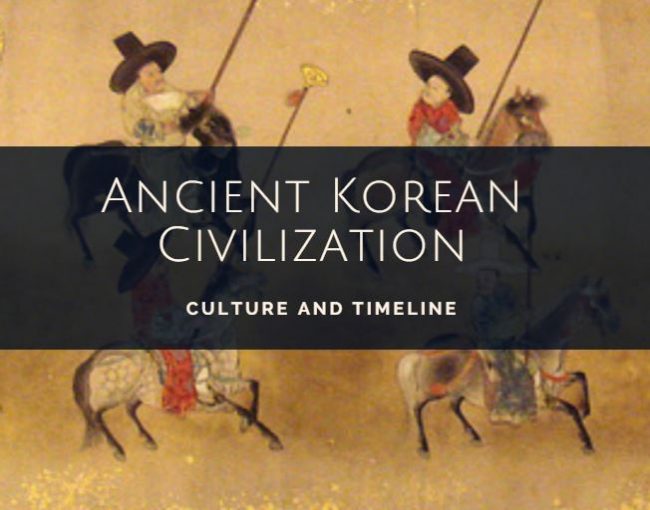
The History of the Ancient Korean Civilization
Contents
The thresholds of Korean history are usually located in the year 2,333 BC., when King Tangun *, a legendary figure born of the son of Heaven and a woman belonging to a testamentary token of the bear, founded the first Korean kingdom, called Choson, which literally means “The Land of Morning Calm” . It is known for sure that the old Korea was characterized by the existence of clan communities that united forming state cities, which emerged and disappeared with time. During this period, tribe commune systems were well established, and young warriors engaged in martial arts training to protect their community. Fighting with empty hands included training in daligi (running), dunjiki (throwing), jileuki (punching), balchaki (kicking), and su young (swimming).
The use of the horse changed the way of life of these tribes: they began to travel long distances, frequent contacts with other tribes arose, alliances were established, and confederations were forced to appear. The warriors then trained in martial arts with more method and planning. In the selection of officers and senior officials, his dominance of the arts of war was decisively important.
The development of horse-fighting skills was a sign of a high-class fighter. The foot warrior practiced empty-handed struggle and weapons techniques, weapons which he kept at home.
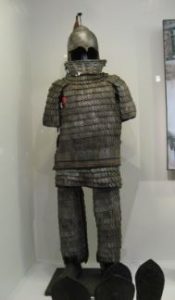
The winner of the battle thus became sovereign, and the loser a dominated slave. In those times the position of the king was not inherited but was given to the strongest warrior among the confederation of tribes. According to the Samkukyusa (one of the most eminent books of ancient Korean history), Dong Myung, the founder of the kingdom of Koguryo, was an expert in archery.
During the ancient Choson boom period, other tribal states flourished on the peninsula, such as Puyo, in the Manchurian region of the Sungari River Basin, and Jin, which during the second century BC emerged south of the Han River and was later Divided into three tribal states (Mahan, Chinhan, and Pyonhan). During its first phase, the capital of Gojoseon is in Liaoning; Around 400 BC, and later moved to Pyongyang.
In 108 BC, the Chinese Empire defeated the Kingdom of Choson and replaced it with four Chinese colonies, a period characterized by the domination of the Han Chinese dynasty of the northern half of the peninsula, to the gradual expulsion of the Chinese as well as the creation of three kingdoms on the peninsula, which would usher in the period known as “The Three Kingdoms.”
Three Kingdoms Period
According to the Korean chronicles, the first roots of the Three Kingdoms can be found in 57 BC, when the kingdom of Saro (later Silla) in the southeast of the peninsula gained autonomy from China in the Han dynasty. Koguryo, meanwhile, emerged on the north and south banks of the Yalu River (Amnok River in Korean). The first reference to the name “Koguryo” in the Chinese chronicles comes from the year 75 A.C., as a local district. According to Korean sources, it became independent from China in 37 BC. The city-states gradually merged into tribal leagues with complex political structures that eventually became kingdoms.
The Korean chronicles recorded the year 18 B.C. as the year of establishment of Paekche. The capital was initially found near what is now Seoul, later moved south to Ungjin (now Gongju) and then further south to Sabi (now Buyeo). However, the Chinese chronicles suggest that Paekche was established in the fourth century by a general of Koguryo.
As the origins of the three kingdoms can be dated in the 1st century B.C., it is sometimes considered that the period of the Three Kingdoms covers the entire period from the first century B.C. and the 7th century of our era. However, historical and archaeological evidence shows a profound change in the nature of life on the peninsula around the fourth century, which is why most historians consider that the period of the Three Kingdoms proper began around the year 300 A.D. Before that year, there is little evidence to indicate a political organization above the level of the walled city-state in the south of the peninsula. The historiographical evidence indicates that entities like Mahan and Jinhan had more power than the still very primitive kingdoms of Silla and Paekche, which only appear as minor states in the “San guo zhi” of the third century. From the fourth century, the three kingdoms began to appear regularly in the Chinese chronicles of the time.
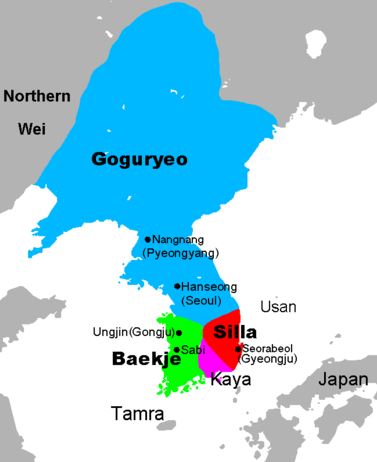
During the Han Dynasty, commandos were established to govern a large part of the north of the Korean peninsula. After the end of the Han Dynasty, at the beginning of the third century, these commandos continued to exist for some time as quasi-independent states. The last to fall, the command of Lelang, was conquered by Koguryo in 313. Thus, the beginning of the period of Three Kingdoms was characterized by the elimination of Chinese influence and a readjustment of power relations in the peninsula.
The three kingdoms shared a similar cultural heritage. It is believed that their original religions were of a shamanist type, but were gradually incorporating Chinese influences, particularly Confucianism and Taoism. In the fourth century, Buddhism was introduced into the peninsula and expanded rapidly, becoming the official religion of the three kingdoms in a relatively short time.
The Three Kingdoms
Koguryo or Goguryeo
Koguryo or Goguryeo was an ancient kingdom that was compromised of the south of Manchuria, the south of the Russian maritime province, and the north and central zones of the Korean peninsula.
Along with Paekche and Silla, Koguryo was one of the Three Kingdoms of Korea. Today, Koguryo is a very important part of Korea’s history, being also considered a major kingdom in the Manchuria region by Chinese people because of the influence in that area for so many years. Koguryo actively participated in the conquest of the Korean peninsula, as well as in foreign affairs concerning China and Japan
The Samguk Sagi (“Samguk” is another way of naming the Three Kingdoms), a document of the kingdom of Koryo of century XII, indicates that Koguryo was founded in 37 B.C. By Jumong (주몽), a prince of Buyeo. However, there are archaeological documents and evidences that suggest that the culture of Koguryo could exist from century II A. C., after the fall of Choson, an older kingdom founded by the legendary Tangún, that also occupied the south zone of Manchuria and the north of the Korean peninsula.
It was one of the main powers of East Asia until it was defeated by the allied forces of the kingdom of Silla and the Tang Dynasty of China in the year 668. After its defeat, its territory was divided between the Tang Dynasty, the unified kingdom of Silla And Balhae. Part of the territory may also have been taken over by the Khitan, who were still a tribe at this time.
Paekche or Baekje
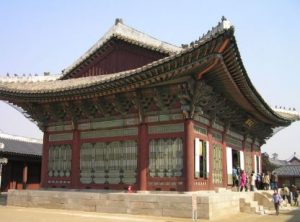
Paekche or Baekje was a kingdom located southwest of the Korean peninsula. It was one of the Three Kingdoms of Korea, next to Silla and Koguryo. Baekje claimed to be the inheriting kingdom of Buyeo, a state established in present-day Manchuria region about the time of Choson’s fall. On the other hand, Koguryo also claimed to be descended from Buyeo, being why it annexed these territories to its kingdom.
Paekche was the only Korean state that maintained prosperous foreign relations with Japan, exerting on it great cultural influences mainly in matters of architecture, art, and literature.
Paekche was founded by Onjo, the son of Jumong (founder of Koguryo) around what is now Seoul. At its most splendid time during the fourth century, Paekche controlled most of the east of the Korean peninsula, expanding its kingdom northward beyond Pyongyang. It was defeated by the alliance of Silla and the Tang dynasty in the year 660, integrating it to the unified kingdom of Silla.
Silla
Silla was one of the Three Kingdoms of Korea that existed between the years 57 B.C. and 935 AD, along with Koguryo and Paekche. It was founded as a principality of the Samhan confederation in 52 B.C.
At first, this kingdom took the name of Saro, until the year 503 when it ended up being called Silla. The kingdom of Silla completely absorbed the kingdom of Gaia during the first half of the sixth century. Silla’s capital was Sŏrabŏl (now Gyeongju). Buddhism was proclaimed as an official religion in 528.
This kingdom came to conquer the territories of the other two kingdoms that expanded by the Korean peninsula: Paekche in 660 and Koguryo in 668, beginning a period that receives the name of “Unified Chair” and putting an end to the period known as “The Three Kingdoms”. During this period, Silla’s kingdom spread throughout most of the Korean peninsula, while the northern part of Koguryo became the kingdom of Balhae, with which it rivaled until the end of the tenth century.
Unified Chair Period
During the period of the Three Kingdoms, the kingdom of Silla established an alliance with the Tang dynasty of China to subdue Koguryo and Paekche, but the Chinese Empire turned out to be a treacherous ally, since its true intentions consisted in conquering for themselves the territories Of Paekche and Koguryo. Before this situation, the kingdom of Silla had to declare the war to them and in the year 676 d. C. expelled the Chinese armies and established the first unified state in the Korean peninsula.
Although politically speaking the three kingdoms were divided, ethnically and linguistically they were strongly intertwined. These three kingdoms, in turn, developed a sophisticated political and legal structure, and adopted the Confucian morality and Buddhist religion. For centuries, conflicts continued to increase among them with several alternative alliances of two against one, against China or against the other two.
The triumph of Silla’s reign over the Chinese Tang Dynasty in 676 marked a historic event for Korean history. Silla managed to expel the Chinese from the peninsula and unified the territory for the first time in history. The Koguryo refugees then repelled Tang’s troops in Manchuria and the north of the peninsula, and established the kingdom of Balhae in 698. This period is known as the Northern and Southern Kingdoms.
In Silla the most famous group of experts in martial arts was the Hwarangdo (“Men or blossoming knights”). The leaders of this group were the sons of noble warriors. Leader of the group was called Hwarang and his followers were called Nangdo. During their training, they traveled to the rugged mountainous areas, the rivers, and seacoasts to train in military techniques and martial arts. Included in the training was the study of classical literature as well as that of dance and music.
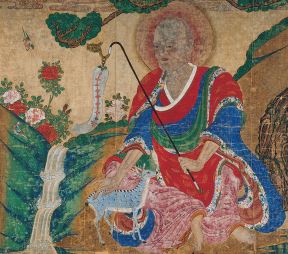
After the long for unification of the kingdoms by Silla in 668, the popularity of martial arts gradually declined. Freed from the concerns of internal struggles and foreign interventions, there was a rapid rise in art, religion, commerce, education, and other fields in which development was remarkable. The capital of Silla, now Kyongju, had a population of more than one million inhabitants in its day, currently about 650,000, which may help to get an idea of the importance it had in its time. Buddhism flourished under the protection of the nobility and exerted a great influence in the affairs of the state, the artistic and moral creation. Silla reached the apogee of its prosperity and power in the middle of the eighth century, but later gradually fell into decay. The fighting in the nobility was intensified, while leaders of rebel groups claimed the right to the succession of the kingdoms that had been defeated, Koguryo and Paekche.
Balhae
Tae Cho-yong, a veteran general of Koguryo, founded Balhae south of Central Manchuria in a region belonging to the late kingdom of Koguryo. Balhae not only had refugees from Koguryo but also a large population of Mongols.
Balhae established a system of governance of five regional capitals based on the existing administrative structure in Koguryo. He succeeded in developing an advanced culture, based on the culture of Koguryo, to the extent that China called it “the flourishing country of the east.”
During the heyday of its power, it occupied a vast territory that extended by the most northern part of the Korean peninsula and a great part of Manchuria including territories that at the moment belong to the Russian Federation. Soon it collided with the kingdom of Silla and the Tang dynasty, although later it initiated a peaceful relation with China. It also established diplomatic ties with the Ottoman Empire and Japan.
Goryeo Dynasty
Goryeo (918-1392) (in Hangul alphabet: 고려, in hanja: 國 國, also written as Koryŏ) was a Korean dynasty founded in 918 by King Wang Geon (also known as King Taejo).
By the end of the eighth century, Silla had been weakened by the internal struggles of the nobles, and by the tenth century the leaders of powerful local factions, such as Gungye and Gyeon Hwon, had established their own governments. During the year 892, Gyeon Hwon established a kingdom called the Late Paekche, with Wansanju as its capital and controlled the territory of present Jeolla-do and Chungcheong-do.
In 901, Gungye, member of the royal family of Silla, founded Late Goguryeo that controlled the present Gangwon-do and Gyeonggi-do. He reformed the system of government, expanded the territory and moved the capital to Cheorwon. He also changed the name of the country to Taebong.
Gungye was losing popularity among his subjects, but still retained control over local leaders and entrenched his aspiration to the throne. He was eventually expelled by Wang Geon, a local Song-do leader, in 918. Wang Geon established as the capital of the kingdom his hometown Song-do (Actual Kaesong) and announced a policy for recovering the lost territory of Goguryeo in Manchuria. For this reason, he called his kingdom Goryeo, from where comes the current name of Korea. Goryeo maintained the hostilities with Late Paekche and adopted a policy of positive confrontation with Silla. In 935, the unified kingdom of Silla was peacefully incorporated to Goryeo and soon in the year 936 Paekche Late also fell under its dominion. Thus, Wang Geon unified the three kingdoms of the Korean peninsula for the first time, becoming a very important figure in Korean history.

Goryeo adopted Confucianism as an official ideology and established an effective system of education with the creation of Gukjagam (a national higher education institution) and numerous hyanggyo (private schools). Buddhism also exerted a considerable influence on the society of Goryeo in general, which reached a great splendor and stimulated the construction of temples and the carving of images of Buddha.
The kingdom exercised a dynamic trade with many countries, including China during the Song dynasty. Many traders from China, Central Asia, Arabia, Southeast Asia and Japan traveled to Byeongnando, the gateway to the capital, Gaeseong. Traders of the Song Dynasty sold silk and herbal medicines, and those of Goryeo sold hemp and gingseng fabrics. From Arabia, it imported ivory, crystal, and amber. Also, the name ‘Korea’ originated from Goryeo during this period.
In the kingdom of Goryeo a magnificent culture was born. The inlaid designs of the jade-green porcelain of Goryeo attest to a unique art unprecedented in other parts of the world at that time. The Korean Tripitaka (a Korean collection of Buddhist scriptures, carved from 81,258 blocks of wood) from the Goryeo period, is the essence of Buddhist culture and cusp of the achievements of wood block printing technology.
The kingdom remained independent and unified until the thirteenth century, but finally, the incursions of the Mongols, which began in 1231, ended with the occupation of Goryeo for almost a century. After that period of occupation and the struggle of resistance of the Korean people, the Mongol invaders were progressively expelled and the territory was recovered, until in 1392 when the period known as “Joseon Dynasty” began, which will be discussed in the next chapter on the history of Korea.
